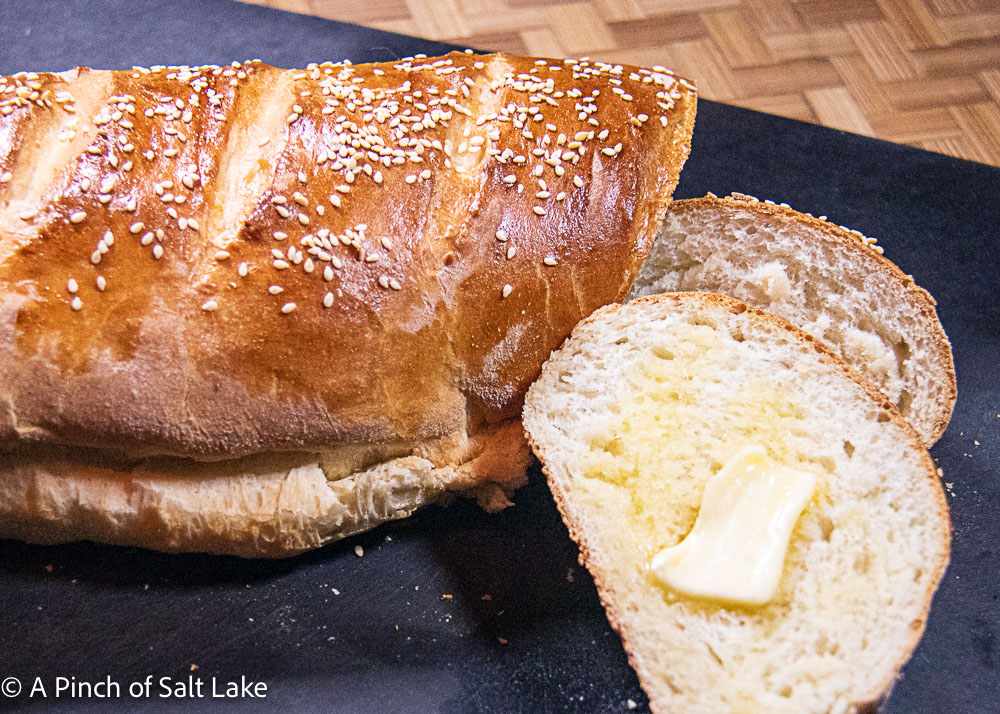
There is nothing better than the aroma of fresh-baked bread. This homemade french bread recipe is simple to make with a heavy-duty mixer. And as an extra bonus, you can enjoy this yeast bread in just two hours.
What Do You Need to Make Your Own Homemade French Bread
If you have a heavy-duty mixer, you should really try your hand making your own bread recipe. All you really need is the heavy-duty mixer with a dough hook. There are bread forms that you can buy if you routinely plan on making french bread. But if you are just beginning, use a baking sheet dusted with cornmeal.
The ingredients needed to make this french bread recipe are probably already in your pantry. The only ingredient you may need to pick up is dry yeast.
The Difference Between Active and Instant or Fast-Acting Dry Yeasts
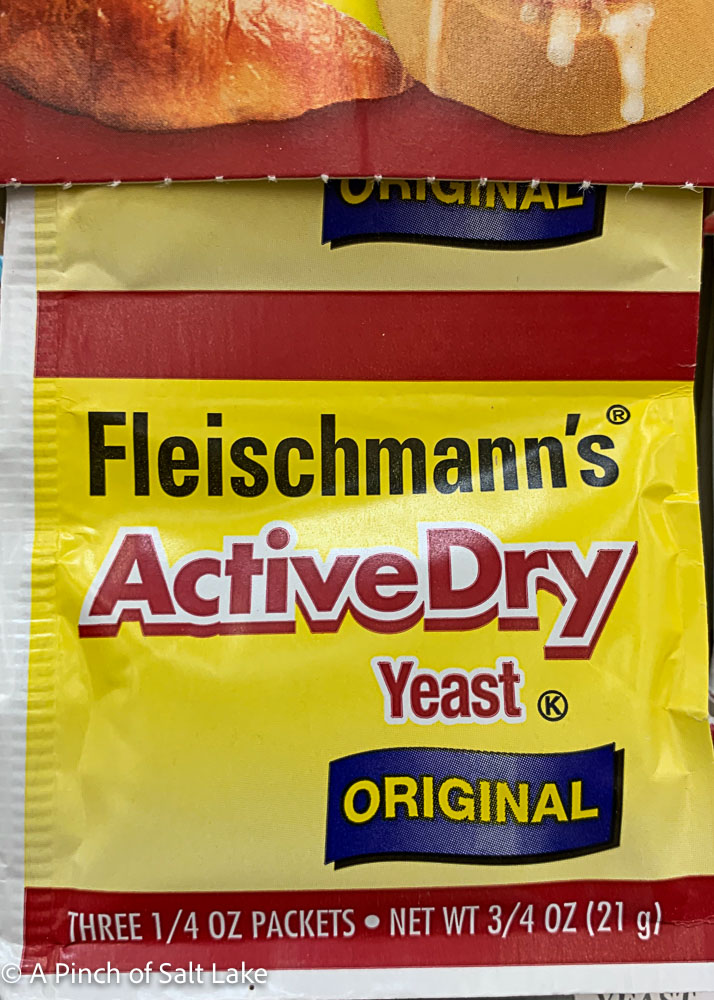

Dry yeast is a granular dehydrated organism. When the yeast is introduced to a warm liquid it grows while feeding on the starch in the dough. This action creates a rise in bread as well as adds to the flavor of the bread. Dry packaged yeast comes in two forms—active and instant. Active yeast must be proofed or activated in warm water (and often use sugar as fuel to feed the yeast) before being added to the other ingredients, especially salt since that ingredient retards the growth of yeast. Instant yeast granules are smaller, so can grow when introduced to the moisture of a recipe without any proofing step.
Step by Step Pictures of Proofing Yeast



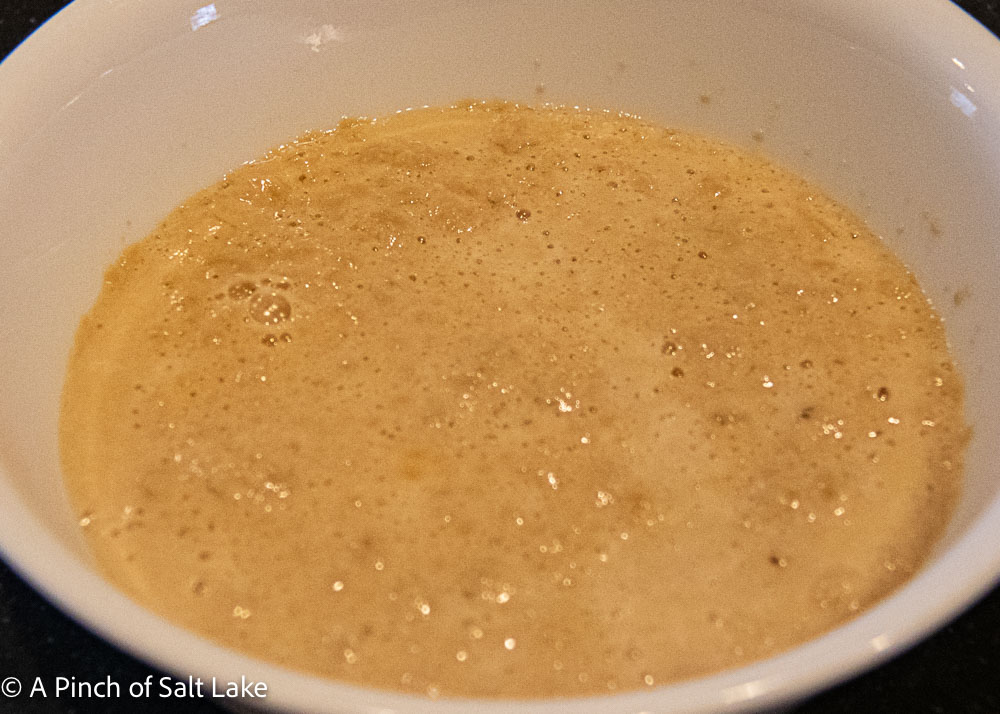
How to Check if Your Yeast is Alive
Since dry yeast is actually alive, it is important to check the expiration date on the package. If you are unsure of the viability of your yeast, you can check if it is alive by adding warm liquid from the recipe in a small container and checking if it bubbles and grows.
Fact-Acting Instant Yeast
Another option for instant yeast is fast-acting yeast. Designed to create the rise and flavor profile faster than active or instant yeast. The benefit of this product is that it only requires one rise to fully inflate a dough. Follow the package instructions when using.
Storing Yeast
The best practice for storing dry yeast is to keep it in the freezer. I put it in a freezer-quality zip-close bag. You can use it straight from the freezer.

What Does it Mean Add Flour Until The Dough Cleans the Bowl?
Recipes for bread often give a range of flour. This is because the temperature and humidity in the air can affect how much flour is enough to form a soft dough. You may see the instruction to add flour until the dough begins to clean the mixing bowl.
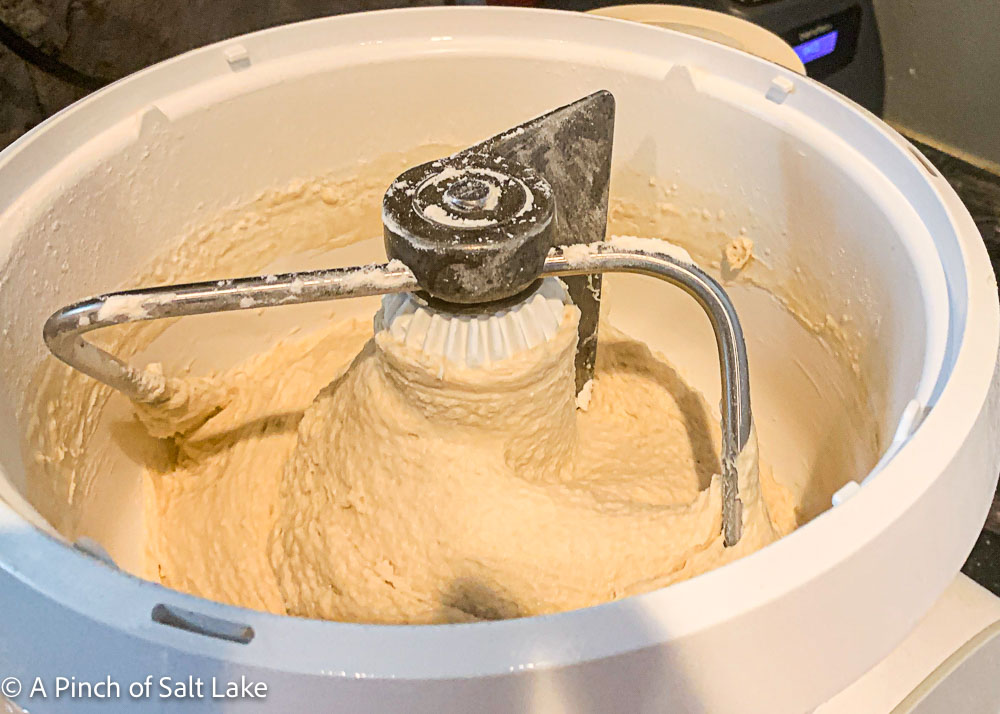


How to Form Homemade French Bread

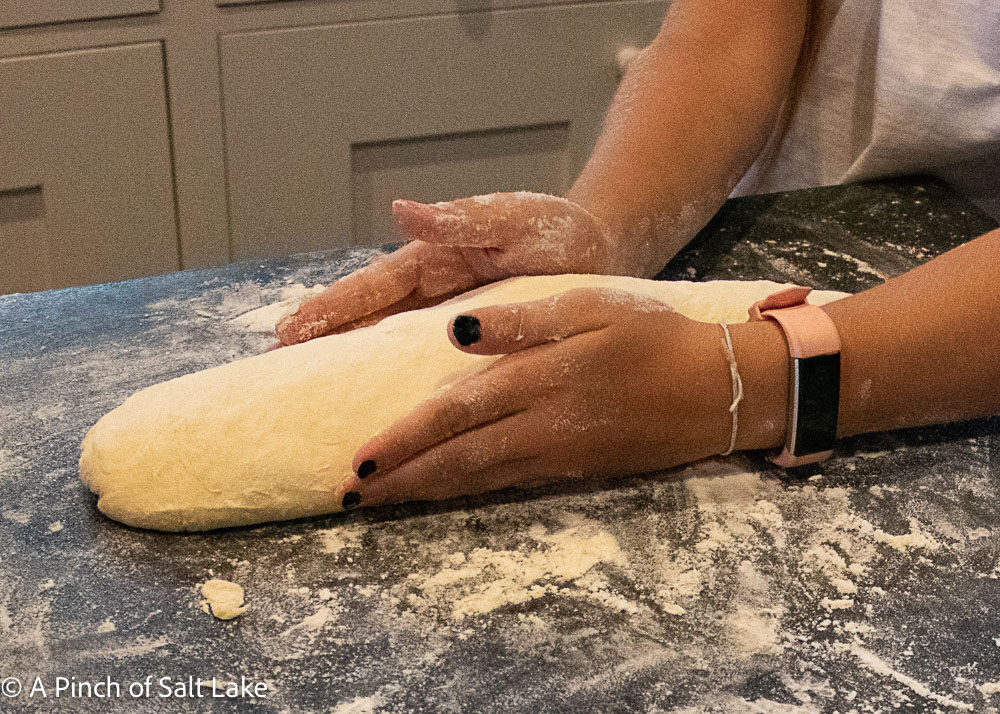

It takes some practice to create a symmetrical free-form loaf. (But even lop-sided loaves of homemade french bread taste wonderful.) Each time you make this easy french bread recipe will give you confidence and soon your loaves will be picture perfect.

Ways to Enjoy Homemade French Bread
Everyone likes warm bread with a smear of butter. Try this easy french bread with this strawberry freezer jam.
French bread also is the perfect accompaniment to soup! Be sure to try my turkey noodle soup recipe. Or if you like creamy soups—I suggest this Creamy Mushroom and Brie Soup or Insta Pot Butternut Squash Soup recipe.
I also always make this bread when serving my rich and saucy Chicken Paprika. We love to clean the plate with a warm slice of bread.
Print
Homemade French Bread
- Prep Time: 90 minutes
- Cook Time: 30 minutes
- Total Time: 2 hours
- Yield: 2 loaves 1x
- Category: bread
- Method: baked
Description
This Homemade French Bread recipe is simple to make with a heavy-duty mixer. You can enjoy this yeast bread in just two hours.
Ingredients
- 2–1/2 cups warm water (about 110°F)
- 2 tablespoons dry yeast
- 3 tablespoons sugar
- 1/3 cup vegetable oil
- 1 tablespoon kosher salt
- 6 – 7 cups of all-purpose flour
- 2–3 tablespoons cornmeal
- 1 egg, beaten into an egg wash
- 3 tablespoons sesame seeds
Instructions
- In the mixer bowl, proof the yeast in the warm water and sugar for about 2 minutes or until the yeast bubbles and forms up on the surface of the water.
- Using the dough hook, add 2 cups of flour, then the oil and salt. Continue spooning in flour until the dough just begins to clean the sides of the mixing bowl.
- Mix on low speed for about 3-5 minutes to knead until the dough is smooth. You may want to add an additional 1/4 cup of flour if the dough thins out to stick to the sides of the mixer bowl. But don’t add too much flour since that will make a dry and heavy bread.
- Turn off the mixer and let the dough begin to rise.
- Set a timer for 10 minutes, then punch down the dough by switching on the mixer for one rotation of the dough hook.
- Repeat this 10 minute rest with a punch down five more times.
- Just before the last punch down, preheat the oven to 400°F.
- Sprinkle corn meal on a baking sheet and set aside.
- Sprinkle a light dusting of flour on a counter. Transfer the dough to the flour dusted counter and divide the dough ball in half. Set aside.
- Flour your hands and then shape the dough into a long log by rolling and patting it into shape. Tuck in the ends to create a tight end to the loaf.
- Carefully pick up the dough and transfer it to the prepared baking sheet.
- Repeat the process with the second dough ball.
- Using a lame or the tip of a sharp knife, lightly score the top of each loaf several times on an angle.
- Let the loaves rise slightly for ten minutes. Then using a pastry brush, carefully apply a light coat of egg wash only on the top.
- Sprinkle seeds over each loaf.
- Carefully place the baking sheet into the preheated 400°F oven.
- Bake the homemade french bread for 30 minutes, until golden brown.
- Remove the pan from the oven and let rest for 5-10 minutes.
- Slice the french bread into slices and serve warm with butter.






Leave a Reply